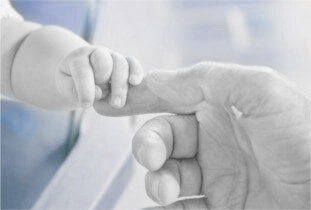Cleveland Injury Attorneys Recover Compensation for Treatment of Birth Injuries After Medical Negligence
 Choosing the right treatment or therapy for a particular birth injury
Choosing the right treatment or therapy for a particular birth injury
The protocol for treating a birth injury depends on a variety of factors, including the type and severity of the birth injury and the preferences of the parents. Some — such as cephalohematoma and most fractures — will heal without treatment, while others may require intense treatment or a combination of treatment methods to treat effectively. Whether due to an unavoidable consequence of childbirth, or a medical error or negligence, an injury incurred during labor and delivery can lead to a lifetime of care and expenses for which a family may be ill-prepared and unable to afford. The Ohio birth injury attorneys at The Eisen Law Firm in Cleveland work hard to ensure parents receive the compensation and resources they need to treat their child’s birth injuries.
Surgical treatments for severe birth injuries
Severe birth trauma may require surgery to ensure an infant’s survival or to avoid paralysis or other long-term consequences, such as:
- A fractured skull (though some skull fractures need no treatment);
- A brain hemorrhage;
- A fractured bone that perforates an organ;
- Orthopedic issues, such as bone curvatures, uneven muscle or bone growth or artificial limbs;
- Nerve damage, such as brachial plexus injuries that do not respond to other therapies;
- Injuries that threaten the loss of an infant’s vision or hearing; and
- Cerebral palsy — doctors may perform surgery to alleviate muscle stiffness by removing some nerve fibers or severing certain tendons or muscles to help an infant develop a greater range of motion
Medications for treating the symptoms of birth injuries
Medications used for treating particular symptoms of birth injuries include:
- Pain medication — Infants who undergo surgery or suffer from nerve pain, muscle spasms and inflammation often receive pain medication to make them more comfortable.
- Anticonvulsant medications —Infants with cerebral palsy and other neurological issues caused by oxygen deprivation or nerve damage often suffer from seizures that anticonvulsant medications — Gabapentin, Topiramate, Zonisamide, Oxcarbazepine and Lamotrigine — help to ease by suppressing brain stimulation.
- Anticholinergics — Cerebral palsy can cause stiff, sore, and overactive muscles that doctors treat with anticholinergics — Glycopyrrolate, Trihexyphenidyl hydrochloride, Procyclidine hydrochloride, Benztropine mesylate and Carbidopa-levodopa —that block the neurotransmitters that cause uncontrollable muscle movement and spasms (they also help reduce excessive drooling, as well as bronchial and digestive tract secretions).
- Antispastic medications — Similarly, antispastic medications— Baclofen, Flexeril, Tizanidine, Dantrolene and Diazepam — also help to reduce body tremors and spasticity.
- Antidepressants — Many doctors use antidepressants to treat anxiety and/or depression, which can often make it more difficult to cope with physical problems and limitations, as well as seizures and spasticity. Typical antidepressants include Zoloft, Lexapro, Paxil, Prozac, Luvox and Celexa.
Various treatment options are available
-
Hyperbaric oxygen therapy – Used to decrease symptoms of brain damage. Doctors often use hyperbaric oxygen therapy to treat infants who suffered from oxygen deprivation during the birthing process given evidence that it can decrease the symptoms of brain damage, thereby potentially helping to treat autism and cerebral palsy.
-
Physical therapy – Eases the effects of birth injuries. Birth injuries often require some type of physical therapy, particularly for patients with cerebral palsy, shoulder dystocia, brachial plexus injuries or other conditions that affect the muscles and coordination. Physical therapy helps enhance a person’s quality of life by improving mobility and muscle strength.
-
Occupational therapy – When a birth injury causes physical, cognitive, or sensory disorders, occupational therapy can help children develop the skills needed to cope with social and emotional situations or develop the necessary muscle control and hand-eye coordination to handle their daily needs, such as brushing teeth, using utensils, etc.
-
Recreational Therapy – Recreational therapy can often be useful for children with physical, cognitive, or emotional limitations caused by birth injury. Using various modalities (including dance, sports, drama, crafts, music and others), recreational therapists help children gain confidence and integrate their skills into the community.
Who is responsible for the treatment and therapy costs of birth injuries?
Nearly one half of birth injuries are preventable if medical personnel properly recognize and anticipate obstetric risk factors. When such risk factors go unnoticed, however, medical facilities, doctors and other medical staff can be held liable.
Contact leading Ohio medical malpractice lawyers today to schedule a free consultation
The birth injury attorneys at The Eisen Law Firm serve families in Cleveland, Lorain, Columbus, Toledo, Akron and throughout Northeast Ohio who need assistance exercising their child’s rights. Schedule a free initial consultation by calling us at 216-687-0900 or contact us online.




